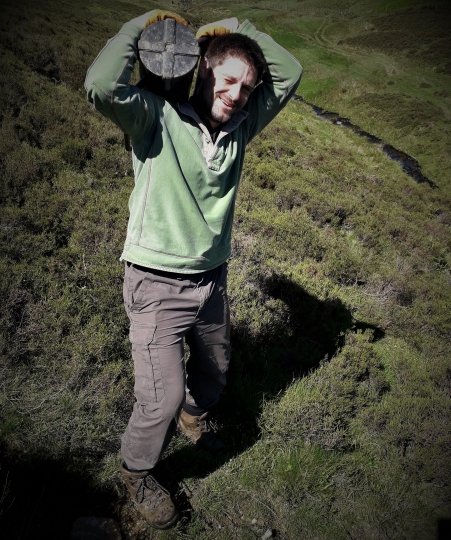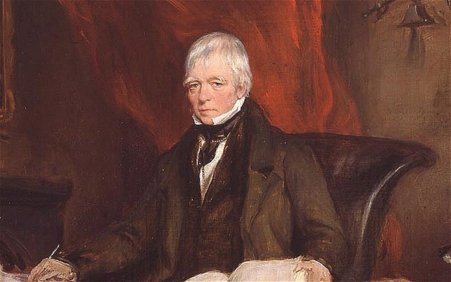Project
BLOG
Restoring
Upland Nature
home to the south of scotland
golden eagle project
Project
BLOG
This week Community Outreach Officer Philip Munro recommends the writings of Sir Walter Scott, specifically 'Sylva Abbotsfordiensis'.
Although perhaps not as widely celebrated today as some famous Scots, Sir Walter Scott is known as one of Scotland’s great literary figures. His poetry and works such as the Waverly novels, The Bride of Lammemuir and Rob Roy painted the romantic notion of Scotland that is beamed across the world today. However, it was his writing of a different nature that was to inspire me.
What many don’t know is that Scott was a prolific tree planter, even producing a diary of his work called Sylva Abbotsfordiensis. Undoubtedly Scott was planting with an eye for commercial purposes but the diary refers extensively on the consideration of aesthetics, the landscape and sustainable practice. Along with his own personal journal he noted a preference for native species, he spoke of not degrading the soil and he even congratulates himself on bringing many species of birds back to what he previously described as a wasteland.
“From the number of birds drawn to these wastes, I may congratulate myself on literally having made the desert sing.”
I was well underway in a career in conservation by the time I came across Scott’s writing.
Working as a Ranger on his Abbotsford Estate I took great pride in managing a small but ecologically diverse and historically important patch of ground. Undertaking an estate management plan, I became engrossed in Scott’s journal and in Sylva Abbotsfordiensis, keen to stay true to Scott’s plans.
Something of a polymath, Scott developed a wider interest in the environment, publishing further works on forestry and also on salmon conservation, indeed he was one of the founding members of the River Tweed Commission. There is even a reference to the golden eagle in the poem, Marmion but that’s a blog for another day.
Despite the advance of time and our understanding of the environment, some of Scott’s practice could easily be compared to modern-day conservation. However, it was his consideration for humanity that has stuck with me most. Long before we had the ‘right to roam’ Scott was offering free access on his estate.
“I will venture to say that not one of my young trees has ever been cut, nor a fence trodden down or any kind of damage done in consequence of the free access that all the world has to my place.”
He wrote of suffering from depression or ‘the black dog’ but that it was his engagement with nature, ‘a benign nurse’ that offered him the best tonic. Scott was very much a man ahead of his time.
One passage refers to his understanding that he would not benefit from the trees he was planting but it would be future generations who would walk under their shade.
I like to think in our own small way are doing something similar through our work with Eagle Schools and Eagle Champions; that future generations will grow up with an understanding and respect for their natural heritage including the magnificent golden eagle, thriving in the south of Scotland.
Further reading:
The journal of Sir Walter Scott (Canongate Classics)
The Early Days of the River Tweed Commissioners (Caroline Balfour)
EAGLE UPDATE
All four Eagles are doing well with all of them currently using the areas around the Moffat Hills.
CORRECTION: In Daily Blog 20 (Eagle of the Day - Beaky C11) I stated that Beaky had killed two males from the 2019 release. While the project team are entirely confident this is what happened, failure to recover B29's body (due to the tag most likely being damaged during the altercation) means we can only officially report one dead Eagle (C19) and one missing (B29).
Apologies if this has led to any confusion.
Rick
BIG EAGLE QUIZ ANSWERS: 1.c/2.b/3.b/4.c/5.c/6.a/7.a/8.d/9.d/10.c/11.d/12.b/13.c/14.c/15.a/16.c/17.c/18.a/19.c/20.d


